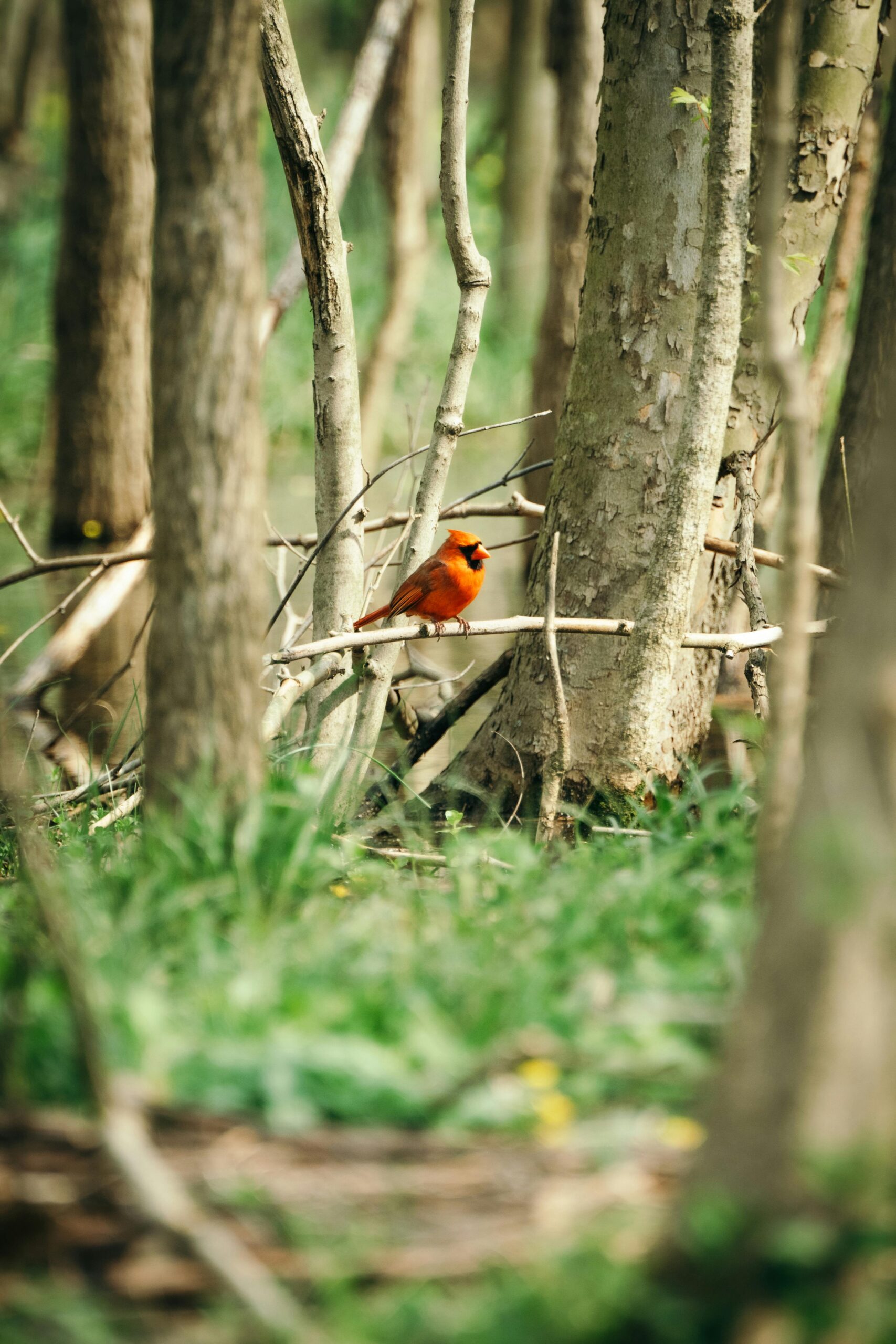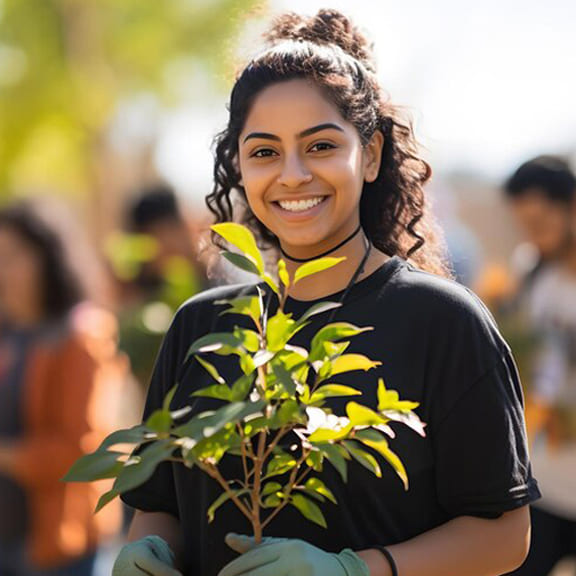Biodiversity & Biosafety
Climate change can be defined as any significant long-term change in the expected patterns of average weather of a region (or the whole Earth) over a significant period of time. Climate change speaks to the abnormal variations to the climate, and the effects of these variations on other parts of the Earth.
Ans: Our planet is warming as a result of an increased concentration of greenhouse gases such as Carbon Dioxide (CO2) in the atmosphere. Scientific opinion has come to the conclusion that there is an unreasonable accumulation of GHG’s especially CO2 in our atmosphere, and “we” as individuals are to blame for this accumulation. Our dependency on Carbon-based energy has caused a significant build-up in greenhouse gases in the atmosphere.
Ans:
Greenhouse gases are those gases that contribute to the greenhouse effect by absorbing infrared radiation. The primary greenhouse gases are water vapour, carbon dioxide, methane, nitrous oxide and ozone. These gases act a bit like the glass in a greenhouse, trapping the sun’s heat and stopping it from leaking back into space.
The burning of coal, oil and gas produces carbon dioxide and nitrous oxide. Trees help to regulate the climate by absorbing CO2 from the atmosphere. So when they are cut down, that beneficial effect is lost and the carbon stored in the trees is released into the atmosphere, adding to the greenhouse effect.
The increase of organic matter from livestock waste is contributing to increase levels of methane in the atmosphere. Cows and sheep produce large amounts of methane when they digest their food
Fertilizers containing nitrogen produce nitrous oxide emissions.
Fluorinated gases are man-made gases that can stay in the atmosphere for centuries and contribute to global greenhouse effect. The four main types are hydrofluorocarbons (HFCs), perfluorocarbons (PFCs), Sulfur Hexafluoride SF6) and Nitrogen Trifluoride (NF3). These gases produce a very strong warming effect, up to 23 000 times greater than CO2.
Ans: It has long been recognized that greenhouse gas emissions from small islands such as St. Kitts and Nevis are negligible in relation to global emissions, but that the threats of climate change and sea level rise to small islands such as St. Kitts and Nevis are very real.
Climate change is likely to adversely impact our ecosystems, biodiversity, and marine life as well as other critical socio-economic sectors such as tourism, agriculture (especially food security), water resources, housing and infrastructure and human health.
The main threat to the tourism industry due to climate change includes:
- Direct damage to tourism accommodation plants, mainly hotels and support resources, such as beaches & coral reefs)
- Loss of attractiveness of the region as a tourism destination
- The possibility of milder winters in North America and Europe may result in reduction in arrivals
- Loss of employment in the industry

Agriculture and fisheries play an important role in the socio-economic livelihoods in our lives. The main concern in these sectors relates to how climate change may affect:
- Crop yields
- Water availability for irrigation
- Ground water and agricultural soils
- Marine ecosystems including coral reefs, sea grass beds, mangroves
- Fish catch
The availability of water in terms of quantity and quality is an important indicator of development. Hence, it is important to consider the potential impacts of climate change on water resources which include:
- Increase of rates of evaporation & evapo-transpiration, leading to drought
- Sea level rise leading to salt water intrusion into coastal aquifers
- Increased rainfall intensity resulting in rapid runoff and flash floods and even degradation of surface water bodies
- Increases in heavy rains could lead to increase soil erosion and runoff of contaminants with adverse effects on water quality
Projected climate change-related exposures are likely to affect the health status of millions of people, through:
- Increase deaths, diseases and injury due to heat waves, floods, fires and droughts;
- The increased frequency of cardio-respiratory diseases due to higher concentrations of ground level ozone related to climate change;
- The altered spatial distribution of some infectious disease vectors (such as malaria and dengue fever).
- Reduce quality of potable water
Ans: Mitigation and Adaptation actions are the primary policy responses to climate change. Whilst mitigation addresses the root cause by reducing our greenhouse gas emissions, it is still necessary to engage in adaptation actions geared towards lowering the risks posed by climate change. This therefore means that both actions are necessary because even when emissions are dramatically reduced, adaptation will be required to deal with the global changes that were already set in motion.
- Mitigation
- Adaptation
 Mitigation can be defined as any measure or effort to reducing or preventing emission of greenhouse gases. An increase in global average temperature is directly related to the concentration of greenhouse gases in the atmosphere. This therefore means that all efforts must be made to decrease the amount of emissions released in the atmosphere by expanding forests and other sinks to remove greater amounts of CO2 from the atmosphere or developing alternative renewable energy resources (wind power, geothermal, solar and biofuel).
Mitigation can be defined as any measure or effort to reducing or preventing emission of greenhouse gases. An increase in global average temperature is directly related to the concentration of greenhouse gases in the atmosphere. This therefore means that all efforts must be made to decrease the amount of emissions released in the atmosphere by expanding forests and other sinks to remove greater amounts of CO2 from the atmosphere or developing alternative renewable energy resources (wind power, geothermal, solar and biofuel).
The risks and impacts of climate change can be managed by taking ‘no regrets’ actions. These are development actions we must take in any event. For example, we must build our infrastructure to withstand more intense weather events, select crops that can withstand extreme conditions and climate-influenced opportunistic pests, and transform our planning frameworks to improve our resilience.
Access to reliable data will facilitate good decision making. The installation of these equipment will complement existing stations that were already installed around the Island of St. Kitts.
The CCORAL tool is an adaptation which helps decision makers to see all kinds of activities through a ‘climate’ or ‘climate change’ lens. It helps the user to identify actions that minimise climate related loss, take advantage of opportunities and build climate resilient development in their countries. Currently, in St. Kitts and Nevis, all capital projects that are to be submitted to the Department of Economic Affairs and Public Sector Investment Planning musty show proof that the project/programme has been screened using the tool.

Frequently-Asked Questions
Funds Raised
0k
Trust Score 4.7 (Based on 1,200 reviews)
A workshop involving key sectors was held demonstrating the usefulness of the tool was held in 2017.
In January 2019, a hydrometeorological station was installed in the Ottleys area. It will be collecting meteorological parameters such as rainfall, temperature, wind direction and speed.
In April 2018, a Coral Reef Early Warning System (CREWS) was installed at Paradise Reef, Sandy Point. The CREWS buoy will be measuring meteorological parameters such as wind speeds, wind gusts wind direction, air temperature, relative humidity, barometric pressure, precipitation and oceanographic parameters such as sea temperature, salinity and algae content which will allow us to better understand the biological mechanisms in the selected area as well better predict coral bleaching over time.





